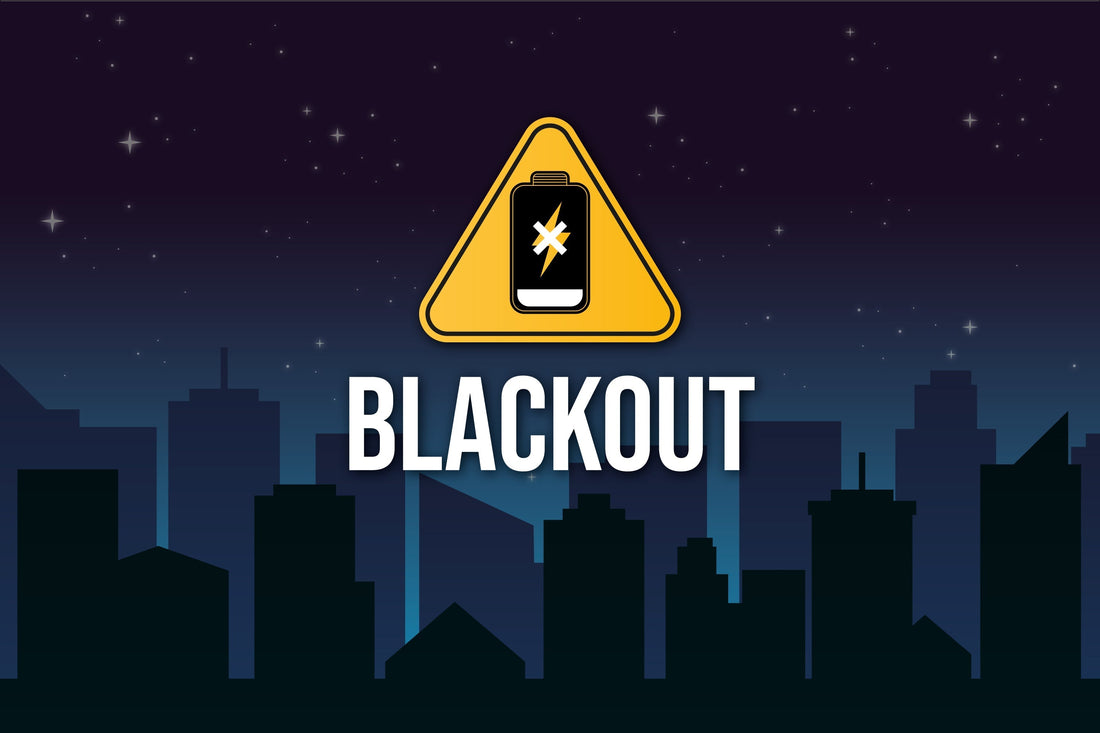
European Blackouts: Could They Happen Again?
Share
Imagine this: You’re at home, making dinner. The lights flicker. Then everything goes dark.
No TV. No heating. No Wi-Fi. No idea when it’s coming back.
This isn't just a scene from a disaster movie. It's something millions of Europeans have already experienced. And it could happen again.
Let’s talk about why.
⚡ What Is a Blackout?
A blackout means the electricity goes out—sometimes for a few minutes, sometimes for days. It can happen in just your street, or across an entire country.
When the power fails, almost everything stops: traffic lights, water pumps, heating systems, supermarkets. Even mobile networks can shut down if the backup batteries run out.
That’s why experts say the first 72 hours of a blackout are critical. It’s when people are most vulnerable.
🕯️ When Did This Happen Before?
Here are some real blackouts that affected Europe:
- Italy, 2003 – A fallen tree in Switzerland led to a massive outage. 56 million people lost power.
- Ukraine, 2015 – A cyberattack on the power grid shut down electricity in freezing winter conditions.
- Kosovo, 2022 – Power cuts became daily during an energy shortage.
- UK & France, 2022 – High energy demand and supply shortages caused grid instability warnings.
- UK & France, Winter Storms 2023–2024 – Severe storms caused widespread power outages affecting over a million people, with extended recovery times.
- Balkans, 2024 – Major blackout in Albania, Bosnia-Herzegovina, Montenegro, and Croatia caused by substation failures affecting the wider grid.
- Estlink 2 Cable Failure, 2024 – Underwater power cable between Estonia and Finland broke down, suspected sabotage, reducing electricity flow for months.
-
Ukraine, 2024 – Russian missile and drone attacks severely damaged energy infrastructure, causing long daily blackouts during winter.
- Iberian Peninsula, 2025 – Hours-long blackout across parts of Spain, Portugal, and southern France triggered by network faults and insufficient power capacity.
Each one started differently. But they all remind us of one thing: our modern lives depend on a fragile system.
🌍 Why Are Blackouts Still a Risk in Europe?
You’d think in 2025, we’d have this figured out. But the truth is: we’re more at risk now than ever before. Here’s why:
1. Energy Dependence
Many European countries rely on gas and oil imports. When war breaks out (like in Ukraine), those supplies get disrupted. Less energy means more stress on the grid.
2. Aging Infrastructure
Some power lines and stations are decades old. It only takes one overload or accident to start a chain reaction.
3. Extreme Weather
Floods, heatwaves, and storms are getting worse. These events knock out transformers and power cables. In some places, they shut down the whole grid.
4. Cyber Threats
Hackers can attack the energy system. It’s happened before—and experts say it could happen again.
🔮 So… Could It Really Happen Again?
Yes. And probably will.
Energy experts across Europe have warned that temporary blackouts or "controlled outages" may become more common—especially in winter.
Governments are preparing. But so should you.
🧰 How to Prepare for a Blackout (The Smart Way)
Here’s what you can do right now:
- Have a 72-hour emergency kit: Food, water, light, first aid, and power. These basics can save lives.
- Store extra water: No power can also mean no running taps.
- Keep a torch and batteries nearby: Not your phone light—save that battery.
- Charge power banks: Better yet, use solar-powered chargers.
- Know where your blankets are: If the heating goes, you’ll need to stay warm.
- Have a battery-powered or crank radio: You’ll need updates, even without the internet.
If you don’t have time to build a kit yourself, Directive72’s emergency kits are designed for exactly this. We’ve thought of everything so you don’t have to.
🕒 Why 72 Hours?
In most emergencies, help doesn’t come right away. Roads might be blocked. Services overwhelmed.
That’s why experts focus on the first 72 hours. If you can stay safe, warm, and fed for three days, you give yourself—and your loved ones—a real advantage.
✅ Final Thoughts
Blackouts in Europe aren’t just old news. They’re part of our present—and possibly our near future. But this doesn’t mean we need to panic.
It just means we need to prepare.
Because when the lights go out, the best tool you can have is peace of mind.
👉 Ready to prepare?
Check out our 72-Hour Emergency Kits, trusted by families across Europe.
Be ready before you need to be.


